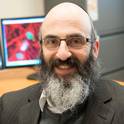| Present | Associate Professor, Western University ‐ Robarts Research Institute | |
|
|
||
| Present | Associate Scientist, Lawson Health Research Institute ‐ Children's Health Research Institute (CHRI) | |
|
|
||
| Present | Professor and Associate Chair, Research, Western University ‐ Department of Anatomy and Cell Biology | |
|
|
||
Disciplines
Cell Biology and Anatomy
